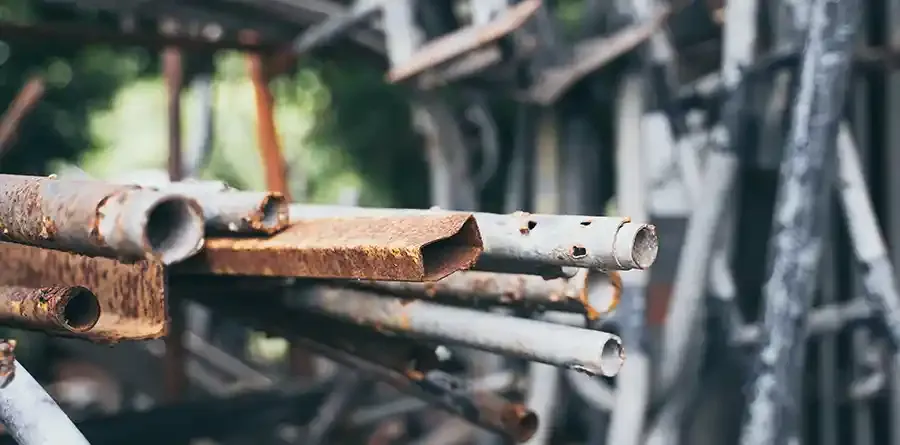Hyundai Motorstudio Senayan Park
Hyundai Motorstudio Senayan Park
Newsroom
The official news from Hyundai Motorstudio Senayan Park and a collection of innovative articles on mobility and sustainability here.
-
4 Ways to Overcome Factory Waste that You Should Know
- Hyundai Motorstudio Senayan Park Senayan Park 2022.05.20
-
Are you a business owner and have to deal with industrial waste? Likely, most industries, from home scale, medium scale, to large scale will produce waste.
Industrial waste typically consists of a variety of different materials. Disposal management will be easier if we can recognize the types.
The industrial waste cannot be disposed of immediately. It needs to sort out first. Which ones can dispose of directly to the TPA (final waste disposal site), recycling, and special treatment for classified toxic and hazardous materials?
There are types of waste and how to deal with factory waste that has to be understood by experts in factory waste management.
Types of industrial waste
It is not just factories that produce waste; humans and animals also in their daily life produce waste, so that waste has become an unavoidable part of life.
Here are some types and dealing with industrial waste:
1. Liquid waste
All types of waste in the form of liquid are liquid waste. There are many examples of liquid waste produced by factories. You can mention that waste such as oil, mud, fat, and dirty water are dangerous and toxic to the environment. Here are how we can deal with liquid factory waste:
a) Screening
In this stage, the waste is disposed of through a specific tunnel and filtered to remove large solids from the liquid waste.
Next, the liquid waste is placed in a special tank or tub to settle the sand particles. Meanwhile, the wastewater continues to flow to the next stage.
b) Floating
In this process, air bubbles lift oil and fat particles to the surface for easier removal.
This stage is similar to ozonation and ultraviolet radiation to carry off pathogenic organisms, bacteria, germs, and viruses in liquids.
2. Solid Waste
Industrial solid waste includes glass, ceramics, plastic containers or bottles, paper waste, metal, and cans.
We can treat organic solid waste by stockpiling it so that it can be decomposed naturally in the soil by waste-decomposing organisms.
First, making holes in the ground and coating the piles with plastic or clay to form methane gas.
Types of non-organic solid waste, such as metals, are mostly recyclable. We can make handicrafts or other products from them.
3. Waste Gas
Unlike liquid or solid waste, industrial gas waste was invisible. However, it is necessary to know how to deal with factory waste in the form of gas because it is dangerous when inhaled.
The factory can use the desulfurization method to manage gas waste. The treatment uses a wet filter (wet scrubber) to reduce harmful gases. The factory also recommended using more environmentally friendly energy sources for fuel.
The gas waste treatment method can also use the gas phase to disguise poor odors or the solid phase (absorbent) method to absorb unpleasant odors.
4. Hazardous Waste
Because it is toxic and dangerous, B3 (danger and poisonous material) waste needs to be managed with proper standards. There are several types of B3 waste management methods, such as:
- Injection wells/deep wells, landfills, and storage ponds.
- Processing methods are separate in three ways, physics, chemistry, and biology.
- First physical treatment, B3 waste is separated and desulfurized to reduce the effects of toxic exposure. Next, chemical treatment managed through solidification, reduction, absorption, electrolysis, ion exchange, sedimentation, and neutralization processes.
- Finally, biological treatment through the phase of bioremediation and phytoremedial, using microorganisms to decompose B3 waste.
Reducing environmental pollution with renewable energy sources
Now, from this explanation, we can learn how to deal with factory waste. So, crucial for us to understand the types of industrial waste and our environment to make it easier to deal with or manage. To reduce environmental pollution, we should take proper steps.
Operating an electric vehicle that is pollution-free and ecologically friendly can be one of them. Hyundai Motors is committed to supporting nature conservation with innovative and advanced electric vehicle technology.
By choosing an electric vehicle like a Hyundai, you participate in conservation because electric vehicles use rechargeable batteries. Hyundai electric vehicles do not need fuel, resulting in zero percent exhaust emissions.
The charging method is easy and very flexible because it is equipped with a special-designed portable charger that is easily plugged into an outlet at home or wherever it is.




